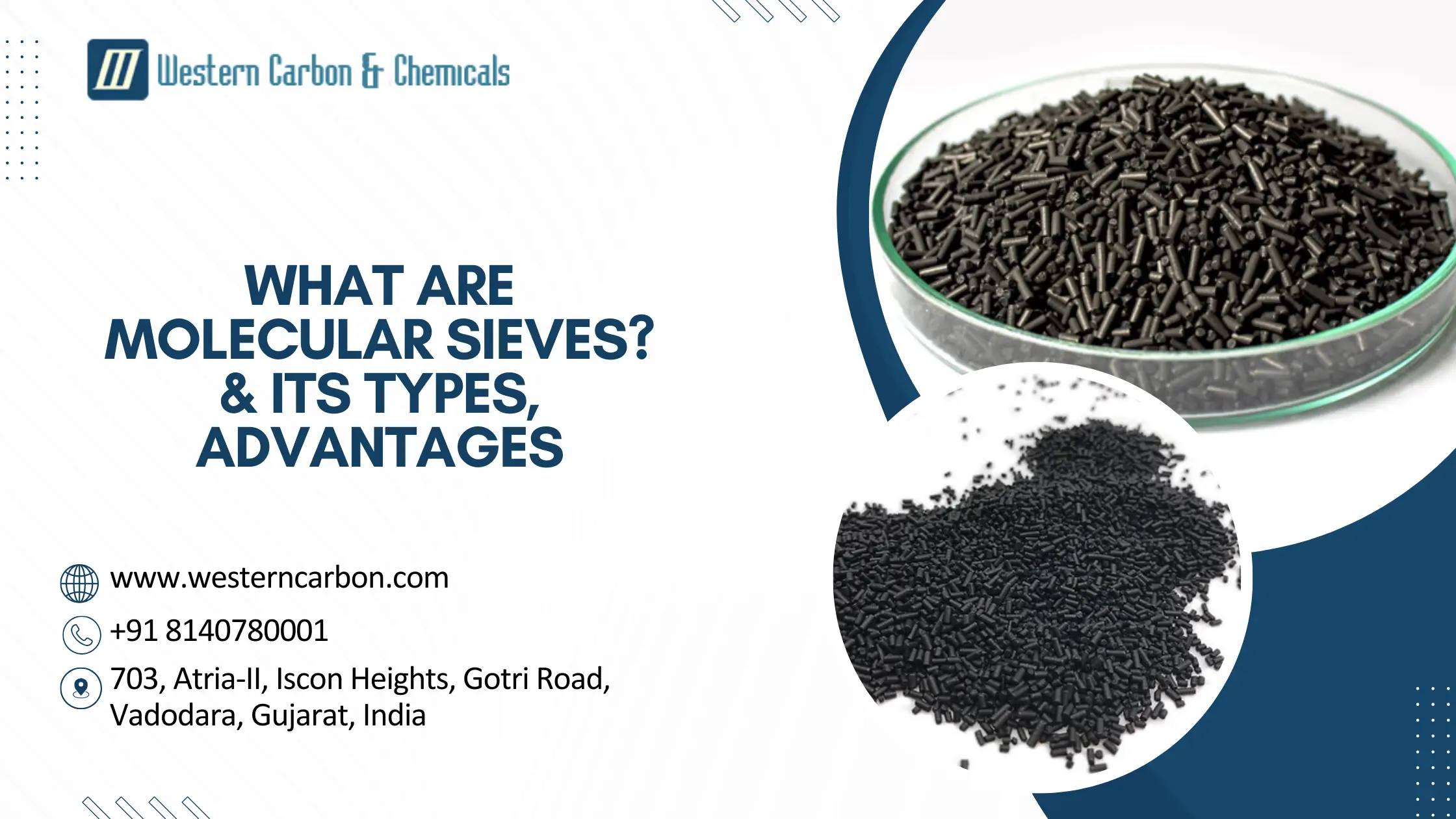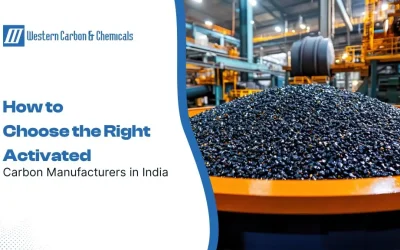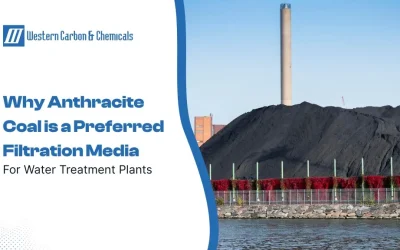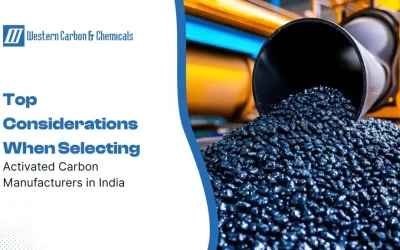Molecular sieves or zeolites have tiny pore structures within themselves. These materials are specialized and developed to absorb molecules based on their shape, size and polarity. Molecular sieves play a crucial role in different industries. They are extensively used for gas separation, dehydration, and purification purposes. This article discusses what molecular sieve absorbents are, their types, and their advantages.
What is Molecular Sieves?
Molecular sieves are synthetic zeolites. A carbon molecular sieve adsorbent is a material with uniform size and tiny pores that selectively absorb molecules based on size and polarity. The structure creates accurate dimensions of cavities that work as molecular filters. The uniform pore structure allows the removal of specific gases and liquids from the industrial process. These molecular sieves are ideal for diverse industrial processes like purifying liquid and dry gases and eliminating contaminants. Western Carbon & Chemicals is a leading carbon molecular sieves manufacturer in India. We offer a wide range of molecular sieves, such as WCC 3A, WCC 4A, WCC 5A and WCC 13X. Western Carbon & Chemicals strives to cater to diverse industrial requirements. Our dedicated team of experts is well-equipped to customize Molecular sieves to cater to unique requirements.
Different Types of Molecular Sieve
- Molecular Sieve 4A: This zeolite molecular sieve 4A has a pore size of 4 angstrom. This makes it perfect for absorbing water and other molecules that are smaller or the same size as 4 angstroms. Hence, it can absorb gases like oxygen, nitrogen, and carbon dioxide while absorbing moisture from the air, solvents, and pharmaceutical goods.
- Molecular Sieve 3A: This is a potassium-infused Zeolite with a pore size of 3 angstroms. This makes it ideal for absorbing water and other molecules smaller or the same size as 3 angstroms. It is also perfect for absorbing water from liquids and gases like methanol, olefins, pharmaceuticals, paints, and air.
- Molecular Seive 5A: This type of molecular sieves have a pore size of 5 angstrom. They are ideal for large sized molecules like gasoline and eliminate unwanted molecules during purification process. Additionally they are used in the petroleum industry for purification of gas streams and chemistry laboratories.
- Molecular Sieve 13x: This type has a pore size of 10 angstroms. It can filter our molecules with a kinetic pore diameter larger than 10 angstroms. It is ideal for absorbing carbon dioxide, aromatics, hydrocarbons, and purifying gases.
Western Carbon & Chemicals offers molecular sieves in different forms, such as cylindrical pellets and dia spheres. We customize the technical specifications to meet your unique requirements.
Molecular Sieve Application
The Molecular sieve uses are seen across different industries. Here are some of the uses of Molecular sieves based on each type:
- Molecular Sieve 4A: It is used in moisture removal or drying of gases and liquids feed air, cryogenic plants, food packaging and more.
- Molecular Sieve 3A: It is used drying of organic liquids like methanol, ethanol, olefins, rectant mixtures and drying of different polar liquids.
- Molecular Seive 5A: It is used to remove traces of carbon dioxide and methanol from nitrogen wash unit in fertilizer paint, removal of gases, drying and purification of inert gases and other uses.
- Molecular Sieve 13x: It is used for moisture removal and gas separation operation.
How Molecular Sieves Work?
Molecular sieves are crystalline materials with a uniform pore structure that serves as desiccants to selectively remove molecules from liquids and gases. The sieving process is based on the accurate uniform pore structure that allows only specific molecules to enter and remain in the pores. This unique quality of selectively absorbing molecules makes it ideal for industrial processes like gas separation, purifying and drying, catalyzing chemical reactions, and other functions. Its controlled porosity allows for specific and efficient molecular separations, making it a versatile material in various industries.
Advantages of Molecular Sieve Adsorbents
Ion exchange resins need to be regenerated to keep intact their ion exchange capacity after absorbing ions over time. This regeneration process includes cleaning the resin bed with an acid or alkaline solution. Additionally, this regeneration process can also produce harmful waste streams containing high concentrations of ions that need to be treated appropriately and disposed.
- Regeneration: Molecule sieves can be reused. All you need to do is heat or gas to remove the molecules.
- Excellent Absorption Capacity: These absorbent materials can remove gases, moisture and polar molecules from liquids and gases.
- High Stability & Resistance: They can withstand high temperatures and exposure to contaminants and pressure.
Conclusion
Molecular sieves are not only highly effective but also incredibly versatile. They can be used in a wide range of industrial processes, from purifying liquids and dry gases to eliminating contaminants. If you need molecular sieves for your specific industrial needs, Western Carbon & Chemicals is your ideal carbon molecular sieves suppliers. Our molecular sieves are made of superior-quality raw materials and tested against different quality parameters to ensure the best products. We also provide a range of adsorbents and water treatment products like activated carbon, Molecular sieves, anthracite coal and more. For more information about our products, contact us today.





